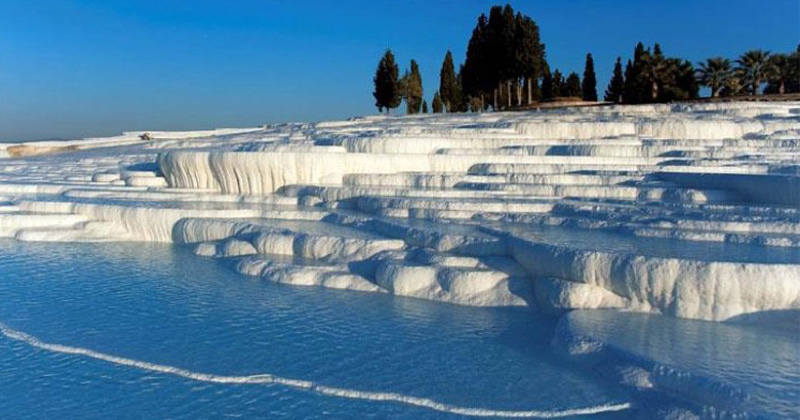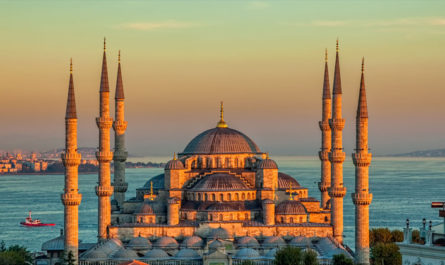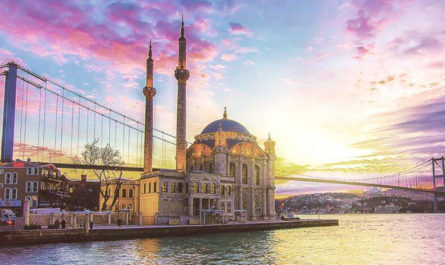Pamukkale is the Aegean Region’s gem, an unreal landscape, gift from the nature. The ruins of the ancient city of Hierapolis, the thermal pools, temples and other Greek monuments can be seen at this heritage site.
SACRED LAND CLAD IN WHITE
The sacred Hierapolis of Phrygia, one of the antique cities of the Aegean, and Pamukkale, inscribed on the UNESCO World Heritage List in 1988. History and nature meets in an extraordinary manner at Pamukkale.
Pamukkale, with its glaring whiteness and petrified waters, is an enchanted and magnificent natural marvel.
The ancient city of Hierapolis is believed to have been founded by Eumenies II, the King of Pergamum, in the 2nd century BC, and to have been named after Hiera, the beautiful wife of Telephos, the legendary founder of Pergamum.
PAMUKKALE
Pamukkale travertine was created by thermal water depositing the calcium carbonate it contained. The natural wonder of Pamukkale travertine deposits span a 160 metres tall and 2700 metres long cascade. With its brilliant white colour, it can be seen about a distance of 20 km. At Pamukkale there are 5 thermal springs with water temperatures between 35-36°C.
HIERAPOLIS
Hierapolis played an important role in spreading Christianity in Anatolia, and it was the place where Phillip, one of the twelve Apostles of Jesus Christ, died. For this reason, Hierapolis became an important religious centre in the 4th century AD. Later it assumed the title of the Guide of the East and Hierapolis came under the rule of Eastern Roman Empire in 395 AD, and became a metropolitan bishopric.
The name Hierapolis also means the sacred city. It has a Necropolis, the Domitian Gate, the theatre with reliefs depicting various mythological scenes, the Frontinus Street, the Agora, the North Byzantine Gate, the Gymnasium, the Fountain with Triton, the Apollo sacred site, the water channels and Nymphea, the city walls, the Martyrium of St. Phillip and bridge, the Column Church, the ruins of Basilica and Roman Baths. These are still standing in all their glory.
UNESCO WORLD HERITAGE
UNESCO Identity Card:
Official Name: Hierapolis – Pamukkale
Architectural Type: Natural Site and Ancient City
Built: 6th century
Date added to Unesco: 1988
Type: Cultural/Natural
Reference: 485
Location: Denizli, Turkey



